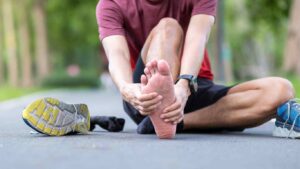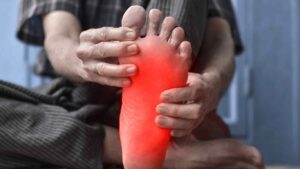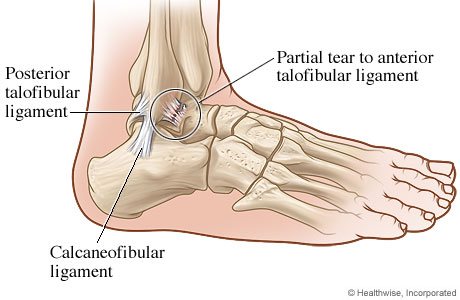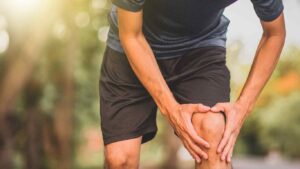What Injuries to Expect during Kokoda Challenge Gold Coast 96km, 48km events
 Plantar/bottom of foot pain
Plantar/bottom of foot pain
What causes bottom of foot pain?
Pain underneath your foot occurs when we have placed too much load through the tissues under our foot. A number of factors can cause this to occur when training for an event like the Kokoda Challenge:
– Sudden increase in training volume
– Changes in training pace or rapid addition of steep hills
– A change from rear foot to forefoot foot strike
– A recent change in footwear
 What to do if it happens?
What to do if it happens?
– Tape can be effective at reducing symptoms of foot pain both during training and if occurs during events. We recommend taking good strapping tape in your pack!! See an example of taping here
– Get to the Physio asap if it happens in training for treatment, including doing calf and foot strength exercises, & we can also decide if a Podiatrist needs to check if your shoes are the best type for your foot function
How to try and prevent it?
– Monitor training load. Avoid sudden increases in total distance/amount of hills/total amount of faster speeds
– Trial new shoes on a shorter training session rather than on a very long hike/run.
– If you have had foot problems, see a Podiatrist to recommend the best shoes for your foot function
– A specific strengthening program can be used that focuses on strengthening the muscles around our foot/ankle/leg provided by your Physio.
 Ankle sprains
Ankle sprains
What causes ankle sprain injuries?
Ankle sprains are one of the most common injuries seen in off-road events such as the Kokoda Challenge.
– Ankle sprains are caused by a sudden inward or outward roll of the ankle joint & resultant acute injury to the ligament and other tissues of your ankle joint
What to do if it happens?
– Take note of what movement occurred at your ankle (inward or outward) & how long it took for you to walk normally on it. This info will help your Physio guide you on how quickly to return to training
– If it happens during training: ice as soon as possible after the sprain occurs, if you are unable to walk then you need to seek medical attention. Best to put your whole foot & ankle in an ice-bath plus use firm compression socks to reduce the swelling
– An accurate diagnosis is essential from a health professional so you are able to get the best advice and rehabilitation plan
– If this happens during the race, let the volunteers know at the next checkpoint as there will be physio’s on the course who will be able to assess your ankle and provide advice and recommendations for you. If its seems not too bad, try taping (again take good quality strapping tape in your pack) – here is an example of how to tape
How to try and prevent it?
– Taping can be used to give your ankle additional support & improve awareness in space to reduce the likelihood of going into extreme ranges of movement that damage the tissues. Try the taping in training before using on event day https://www.mygcphysio.com.au/services/taping-techniques/
– Practice training on terrain similar to what you will experience during the event so your ankles get stronger and more stable and more able to cope with different positions of landing
Front of knee-cap pain
 What causes front of knee pain?
What causes front of knee pain?
Pain around the front of your knee (knee-cap) is another very common place to experience pain when training on lots of hills (especially the big hills on the Kokoda Challenge course!)
Pain in this area can be caused by:
– Sudden increases in training load. This can be due to increases in the total amount of time spent training as well as an increase in the amount of hills being performed.
– Lots of uphill and downhill running/hiking without having good quadriceps muscle strength prior to starting hill training
What to do if it happens?
– Avoiding long steep uphills in training & train over flatter terrain for a while
– Often taping helps. See here for an example of how to tape
– Take Shorter steps when walking/running uphill, or if its super severe, try walking downhill side-wards or backwards
How to try and prevent it?
– Not increasing the amount of training you are doing to quickly
– Gradually introduce hills into your training
– Strength training targeting musculature around the hip and knee prior to hill training
Our Physio team will help you simply book online or call us on 07 5500 6470

































